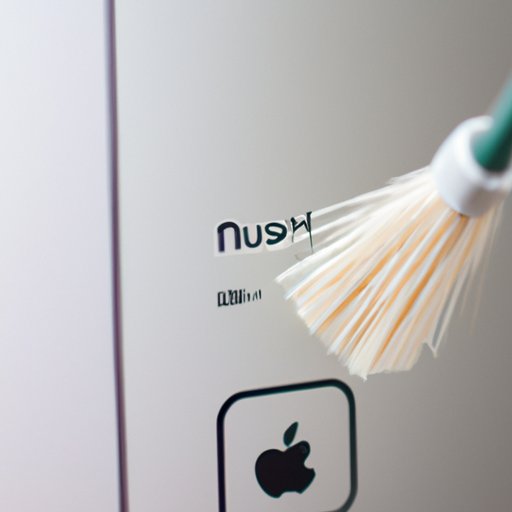I. Introduction
If you’re a Mac user, you may have found uninstalling apps on your computer a bit tricky at times. It can be frustrating when you’re running low on storage space and can’t figure out how to delete those pesky unwanted apps. However, fear not, as this article is a comprehensive guide on how to remove apps successfully from your Mac. In this article, you’ll find step-by-step instructions, a video tutorial, a comparison of app uninstallation tools, and practical solutions to common issues. Keep reading to make your Mac run smoother and cleaner.
II. Step-by-step guide
To uninstall apps on your Mac, simply drag the app icon to the trash. However, that’s not enough as it leaves behind related files and folders. Here are the steps you should follow:
- Click on Finder in the Dock at the bottom of your screen
- Locate the app you want to uninstall
- Click, hold, and drag the app’s icon to the trash can icon in your Dock, or right-click (control-click) the app’s icon and select “Move to Trash” from the contextual menu.
- Go to Finder > Empty Trash to delete all related files and folders from the Trash. Or you can right-click (control-click) the Trash icon in the Dock and select “Empty Trash” from the contextual menu.

III. Video tutorial
If you find following written instructions difficult, a helpful video tutorial can guide you through the process visually. Here’s a video tutorial that clearly explains the process of uninstalling apps on a Mac:
The video also includes annotations and a voiceover to explain which files to delete after uninstalling an app. If you experience any difficulties, check out the additional resources suggested in the video’s description.
IV. Common issues
While uninstalling apps on a Mac is a straightforward process, you may run into some common issues. Here are some and how to fix them:
- The app isn’t in the Applications folder – If you can’t find the app in the Applications folder, it’s likely you installed it from a website, a USB drive, or another source. Go to Finder > Go > Go to Folder and enter “/Library” to find the related files to delete.
- Permission issues – Some apps require admin permissions to make changes to system folders. If you encounter permission issues, enter your admin password to proceed.
- Related files remain – Sometimes, even after emptying the trash, some related files (preferences, cache, logs) may remain. You’ll need to search for these files manually and delete them.
Alternatively, you can use a third-party uninstaller tool to remove all associated files and folders with ease.
V. Comparison of uninstallation tools
While the built-in uninstallation process is sufficient for most users, third-party uninstallation tools offer additional advantages such as removing all associated files and folders automatically. Here’s a comparison of some popular ones you can use:
| App | Pros | Cons |
|---|---|---|
| CleanMyMac X | Features additional cleaning tools, removes all associated files, easy to use interface | Requires a subscription after a free trial, not all features are useful for everyone |
| AppCleaner | Free, very lightweight, automatically finds associated files | No option to select which files to delete, not updated regularly |
| CCleaner | Removes browser-related files, registry cleaning feature on Windows | Expensive, not as effective on Macs as Windows, not optimized for macOS Big Sur |
We suggest using CleanMyMacX if you want a reliable and straightforward uninstallation tool with additional features for cleaning your Mac.
VI. Importance of keeping your Mac clean
Now that you’ve learned how to uninstall apps efficiently on your Mac, it’s essential to maintain your computer’s cleanliness to keep it running smoothly. Here are some tips to help you:
- Regularly uninstall unused apps
- Use Disk Utility to check for errors and repair disks
- Organize your files into folders and delete unnecessary files
- Empty the trash regularly
- Monitor your computer’s performance with Activity Monitor, accessible in Applications > Utilities
- Check for software updates regularly
Keeping your Mac free of unnecessary files will help improve its performance and prevent it from slowing down over time.
VII. Conclusion
Uninstalling apps is a necessary process that every Mac user must learn. Whether you’re using built-in tools or third-party apps, the key is to remove all related files and folders to prevent accumulation of disk space. Regular app uninstallation and general maintenance are critical to keeping your Mac running smoothly, especially when you’re running low on space. By providing practical guidance, additional resources, solutions to common issues, and a comparison of third-party tools, this article has helped you become an expert in uninstalling apps on your Mac.
